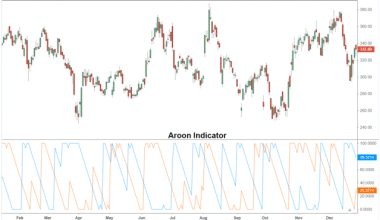Financial ratio analysis is a mathematical tool used by business managers to gain useful insights into the profitability, solvency, efficiency, liquidity, coverage, and market value of a company. This information is provided to business management through financial ratio analysis, which analyzes the data contained in the firm’s balance sheet, income statement, and statement of cash flows. The information gleaned after interpretation of the analysis of the financial ratios is essential to managers who must make financial decisions for the firm as well as to external stakeholders, such as investors, who need to assess the financial health of the company.
What Is Financial Ratio Analysis?
Financial ratios analysis is an essential tool that assists business managers and investors in analyzing and comparing financial relationships between accounts on a company’s financial statements. They are one instrument that allows for financial analysis throughout a company’s history, an industry, or a business sector.
Financial ratio analysis makes judgments based on the data acquired through the calculation of the ratios to improve a firm’s profitability, solvency, and liquidity.
Types of Financial Ratios
We have six types of financial ratios that business managers commonly use in their examination. Within these six categories, 15 financial ratios can assist a business manager and outside investors in the firm’s financial health analysis. Financial ratios are only useful if you can compare them to something else. Compare each ratio to data from previous periods for the business. You can also compare it to data from other businesses in the same industry.
#1. Liquidity Ratios
The liquidity ratios determine if a company can satisfy its present debt obligations with its current assets. There are three primary liquidity ratios that company executives consider:
- Working capital ratio
Also known as the current ratio (current assets – current liabilities). These statistics are removed from the company’s balance sheet. It assesses whether the company can meet its short-term debt obligations with current assets.
- Quick Ratio
The quick ratio (current assets – inventory/current liabilities) is also known as the acid test ratio. You can get these numbers from the balance sheet. The quick ratio assesses the firm’s ability to satisfy its short-term debt obligations without selling any goods.
- Cash ratio
This liquidity ratio (cash + cash equivalents/current liabilities) provides a more conservative assessment of a company’s liquidity because it only includes cash and cash equivalents, such as short-term marketable securities, in the numerator. It denotes the firm’s ability to pay off all present liabilities without depleting any additional assets.
#2. Efficiency Ratios
Efficiency ratios, also known as asset management ratios or activity ratios, are used to assess how effectively a company uses its assets to create sales and maximize profit or shareholder wealth. So, they assess how efficient the firm’s internal and short-term operations are. The four most widely utilized efficiency ratios generated from a balance sheet and income statement data are:
- Inventory turnover ratio (sales/inventory):
This ratio (sales/inventory) shows how quickly inventory is sold, refilled, or turned over each year. The inventory turnover ratio informs the finance manager whether the company is stocking out of goods or storing outmoded inventory.
- Days sales outstanding:
This ratio, also known as the average collection period (accounts receivable/average sales per day), helps financial managers to assess the efficiency with which the firm collects outstanding credit accounts.
- Fixed assets turnover ratio (sales/net fixed assets):
This ratio (sales/net fixed assets) focuses on the firm’s plant, property, and equipment, or fixed assets, and examines how efficiently those assets are used.
- Total assets turnover ratio (sales/total assets):
The total assets turnover ratio (sales/total assets) combines evidence of a firm’s efficient utilization of its asset base into a single measure. It enables the financial management to assess how well the asset base generates sales and profits.
#3. Solvency Ratios
The solvency, or debt management, ratios of a corporation allow the financial manager to assess the firm’s situation concerning the debt financing, or financial leverage, that they utilize to finance their activities. The solvency ratios assess how much debt financing a company employs in comparison to its retained earnings or equity financing. There are two significant solvency ratios:
- Total debt ratio (total liabilities/total assets):
The total debt ratio (total liabilities/total assets) calculates the percentage of funding for the firm’s operations that comes from a combination of current obligations and long-term debt.
- Debt-to-equity ratio:
If the company is publicly traded, this ratio (total liabilities/total assets – total liabilities) is critical. The information from this ratio is virtually the same as the information from the total debt ratio. However, they present in a style that investors may more easily use when examining the business.
#4. Coverage Ratios
Coverage ratios assess a company’s ability to fulfill its debt commitments and satisfy the associated costs. Among these commitments are interest payments, lease payments, and, on occasion, dividend payments. These ratios, in conjunction with the solvency ratios, provide financial management with a complete picture of the firm’s debt position. Here are the two most important coverage ratios:
- Times interest earned ratio:
This ratio (earnings before interest and taxes (EBIT)/interest expense) evaluates how well a company can service its overall debt or repay its debt interest payments.
- Debt service coverage ratio (DSCR):
The DSCR (net operational income/total debt service costs) is a useful summary ratio that shows how well a company can meet all of its debt service commitments.
#5. Profitability Ratios
Profitability ratios are the business firm’s summary ratios. When you calculate the profitability ratios, they add up the consequences of the firm’s liquidity, asset, and debt management. The four most prevalent and significant profitability ratios are as follows:
- Net profit margin:
This ratio (net income/sales) displays the profit per dollar of sales for the company.
- Return on total assets (ROA) ratio (net income/sales):
The ROA ratio (net income/sales) illustrates how efficiently each dollar of total assets generates profit.
- Basic earning power (BEP):
BEP (EBIT/total assets) is comparable to the ROA ratio in that it gauges the efficiency of assets in generating sales. The BEP ratio, on the other hand, removes the influence of taxes and debt from the calculation.
- Return on equity (ROE):
This ratio (net income/common equity) shows how much money shareholders make from their investment in the company. The ROE ratio is especially relevant for publicly traded companies.
#6. Market Value Ratios
Market Value Ratios are typically calculated for publicly traded companies and are not commonly employed for small enterprises. Some tiny enterprises, on the other hand, are publicly traded. The key market value ratios are as follows:
- Price/earnings ratio (P/E):
The P/E ratio (stock price per share/earnings per share) demonstrates how much investors are ready to pay for a company’s shares per dollar of profit.
- Price/cash flow ratio:
Free cash flows determine the worth of a company. The price/cash flow ratio (stock price/cash flow per share) measures how successfully a company generates cash flow.
- Market/book ratio:
The market/book ratio (stock price/book value per share) provides the financial management with another indicator of how investors perceive the worth of the company firm.
What Is the Process of Financial Ratio Analysis?
Financial ratio analysis is used to obtain information from a company’s financial statements that cannot be analyzed just by looking at them.
A financial manager gathers the firm’s balance sheet, income statement, and statement of cash flows, as well as stock price information if the firm is publicly traded, to do a financial ratio analysis. Typically, they download this data into a spreadsheet program.
Small firms can program their spreadsheet to generate each of the 15 financial ratios automatically.
In most cases, they determine ratios for either a quarter or a year. Gather the ratios for other companies in the same industry. So, it is necessary to make comparisons. A financial manager may only conclude the firm’s performance after comparing the financial ratios to prior periods and the ratios of other companies in the industry. So, based on these calculations and comparisons, financial managers may construct a good picture of corporate performance.
On its own, a single ratio computation does not provide much information. For example, if a company’s debt-to-asset ratio is 50% for one period, it doesn’t convey a helpful story unless management compares it to earlier periods, especially if the debt-to-asset ratio was significantly lower or greater in the past. The debt-to-asset ratio, in this case, indicates that debt finances 50% of the firm’s assets. The finance manager or investor won’t know if that’s good or bad unless he compares it to previous company history or the firm’s competitors.
Accurate financial ratios analysis and interpretation provide organizations with insight into their financial status, allowing them to make the required financial modifications to improve their financial performance.
Analysis and Interpretation of Financial Ratios
When you think about what the numbers tell you, analysis and interpretation of financial ratios make sense. When it comes to debt, a corporation is stronger financially when it has less debt and more assets. As a result, a financial ratio analysis smaller than one is more powerful than a ratio of five. However, taking on debt during the time periods of expansion may be strategically helpful as long as it is regulated.
A cash flow margin ratio determines how well a corporation can convert sales into cash. One can compute it by dividing the operating cash flow by the net sales on the income statement. The greater the ratio or proportion of operating cash flow, the better.
Profit margin ratios are the same way. So, if a product costs $20 to create and sells for $45, the gross profit margin is computed by deducting the cost of goods sold from the revenue and dividing the result by the revenue [0.55 = ($45- $20) / $45]. The higher this ratio, the larger the profit per product.
Who Makes Use of Financial Ratio Analysis?
The financial ratio analysis may be required by a variety of stakeholders, including:
#1. Financial managers
Financial managers must have access to the information that financial ratio analysis provides regarding the performance of the business’s various financial functions. Ratio analysis is a useful and strong tool for financial analysis.
#2. Competitors
Other businesses find knowledge about other businesses in their field useful for developing their competitive strategy.
#3. Investors:
Whether a company is publicly listed or financed by venture capital, potential investors require financial information gathered via ratio analysis to decide whether or not to invest in the company.
The Benefits and Drawbacks of Using Financial Ratios Analysis
Benefits
#1. Helpful in creating high-performance goals:
Financial and business managers can determine acceptable financial performance for their companies using financial ratio analysis. So, by examining the financial data of the industry leader, the firm may determine what is reasonable performance and strive for greater performance.
#2. Useful for small businesses with a narrow focus or divisions of larger corporations:
Financial ratio analysis is not beneficial for large, multidivisional enterprises. Because ratios are only helpful when you compare them to industry or firm financial data, smaller enterprises with one line of business or divisions of bigger firms find ratio analysis valuable.
#3. Useful for analyzing a company’s performance over time:
Firms can examine financial performance over time periods such as a quarter or a fiscal year by using time-series or trend financial ratio analysis.
#4. Useful for comparing enterprises on a cross-sectional or industrial basis:
Comparing a firm’s financial performance to that of a group of similar firms within an industry allows the financial management to evaluate where the firm stands competitively.
Drawbacks
#1. Not useful for large, multidivisional firms:
Because ratio analysis is only relevant on a comparative basis, divisions of large corporations can utilize it, but it is not useful for a multidivisional company as a whole.
#2. Problems if there is inflation:
If the business is functioning in an inflationary climate, financial data will be corrupt from one time period to the next, hence ratio analysis would be useless.
#3. Window dressing:
Businesses can deceive their investors by embellishing their financial statements. Window dressing is the practice of making financial accounts appear stronger by changing facts.
#4. Seasonal and cyclical firms:
If a company’s sales are seasonal or cyclical, financial ratio analysis and interpretation utilizing time-series data might produce skewed results because sales vary greatly between the time periods.
#5. Use Of Quantitative Data
The first limitation of this analysis is that it is more quantitative than qualitative. As a result, certain aspects that can have a significant impact on a company’s future are left out. And this simply means that, though the financial ratio analysis is extremely beneficial, it only provides half the story.
Conclusion
Even though the financial ratio analysis has limitations, the benefits it offers are essential to the overall growth of the business. Because it helps to assess the overall health of your business performance.
FAQs On Financial Ratio Analysis
What is the purpose of a financial ratio?
Financial ratios allow business owners to assess their company’s performance and compare it to that of other companies in their field. Ratios are used to determine the relationship between two or more financial statement components. When comparing outcomes over multiple time periods, they are most effective.
Why is financial ratio analysis important?
Because it gauges an organization’s performance. These ratios aid in the comprehension of your company’s financial accounts. They can be used to analyze the financial status of your business by identifying particular tendencies over time.
How do you improve financial ratios?
Paying liabilities, employing long-term financing, managing receivables and payables properly, and decreasing costs are all ways a corporation might improve its liquidity ratios.
- Liquidity Ratio: Types, Formulas, and Calculations
- Cash Ratio: Formula, Calculations & Examples
- Profit and Loss Statement Explained!!! How to Read & Create P&L Statement
- Income Statement Explained!!! What is an Income Statement? Formulas & Elements
- Credit Analysis: Guide to the Process & Ratios of Credit Analysis






